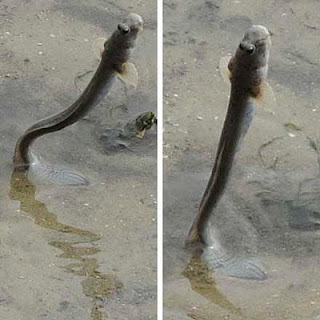Thursday, 27 October 2011

mangrove swamps are found along tropical coasts near the equator.
the strange-looking trees, fish that can walk & crabs that wave to each other!
mangrove trees look as if they are growing on stilts as their roots,
supporting them in the mud, come out of the water. the tangle of
roots is a greater hiding place for young fish
young fish?
mudskipper has gills but it mostly breathes via its skin.
this allow the fish to leave the water
it uses its stiff front fins to push its body across the mud
& even up mangrove roots
ospreys are the top hunters in a mangrove swamps.
they feed on fish & small animals. build their nests,
out of twigs which they use for numerous years
the male fiddler crab has an extra-large claw that he waves up
& down as signal to other crabs. at low tide, the male fiddler crab
sits at the entrance to his burrow & waves his claw to attract females!
mangrove swamps help to protect coasts from hurricane
& tsunami damage. they act as barriers between the sea & the land
croxfiber's sweet memory at sungai bangau-mangrove zone
i.e. 9 mangrove jacks & one grouper
credits: my first ocean life encyclopedia/ flickr/ numerous data
Posted by abg.CF at 08:11
Labels: fiddler crab, grouper, info mangrove, kerapu, mangrove jack, mudskipper, ospreys








